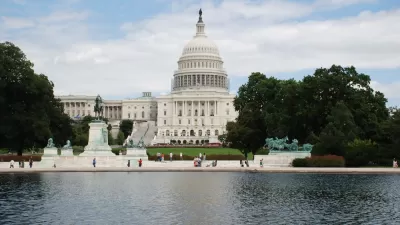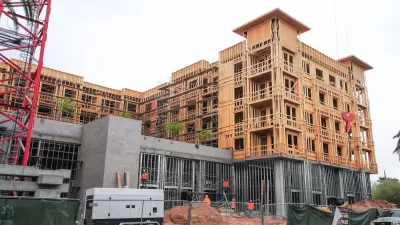The low-income housing and new-markets tax credits are two of the most effective tools for stimulating affordable housing creation and the revitalization of low-income neighborhoods. Don't let them fall victim to tax reform, argues Michael Rubinger.
The low-income housing and new-markets tax credits are responsible for "90 percent of affordable housing development nationwide" and for "spurring investments in businesses, real estate projects and facilities like health clinics, charter schools and child care centers" in low-income communities, explains Rubinger, chief executive of the Local Initiatives Support Corporation.
"But these credits may be in peril," he adds, as Congress considers ways to overhaul the nation's tax code. "While the arguments for comprehensive tax reform are well known, eliminating these credits would be tragic. They bring much-needed capital to communities most investors would never consider."
"If these credits were to disappear, so too would billions of dollars of annual investment in America’s poorest ZIP codes," argues Rubinger. "The result would be lost jobs, more homelessness, a decimated affordable-housing market and destabilized communities."
FULL STORY: Two Tax Credits That Work

Planetizen Federal Action Tracker
A weekly monitor of how Trump’s orders and actions are impacting planners and planning in America.

Map: Where Senate Republicans Want to Sell Your Public Lands
For public land advocates, the Senate Republicans’ proposal to sell millions of acres of public land in the West is “the biggest fight of their careers.”

Restaurant Patios Were a Pandemic Win — Why Were They so Hard to Keep?
Social distancing requirements and changes in travel patterns prompted cities to pilot new uses for street and sidewalk space. Then it got complicated.

Platform Pilsner: Vancouver Transit Agency Releases... a Beer?
TransLink will receive a portion of every sale of the four-pack.

Toronto Weighs Cheaper Transit, Parking Hikes for Major Events
Special event rates would take effect during large festivals, sports games and concerts to ‘discourage driving, manage congestion and free up space for transit.”

Berlin to Consider Car-Free Zone Larger Than Manhattan
The area bound by the 22-mile Ringbahn would still allow 12 uses of a private automobile per year per person, and several other exemptions.
Urban Design for Planners 1: Software Tools
This six-course series explores essential urban design concepts using open source software and equips planners with the tools they need to participate fully in the urban design process.
Planning for Universal Design
Learn the tools for implementing Universal Design in planning regulations.
Heyer Gruel & Associates PA
JM Goldson LLC
Custer County Colorado
City of Camden Redevelopment Agency
City of Astoria
Transportation Research & Education Center (TREC) at Portland State University
Camden Redevelopment Agency
City of Claremont
Municipality of Princeton (NJ)





























